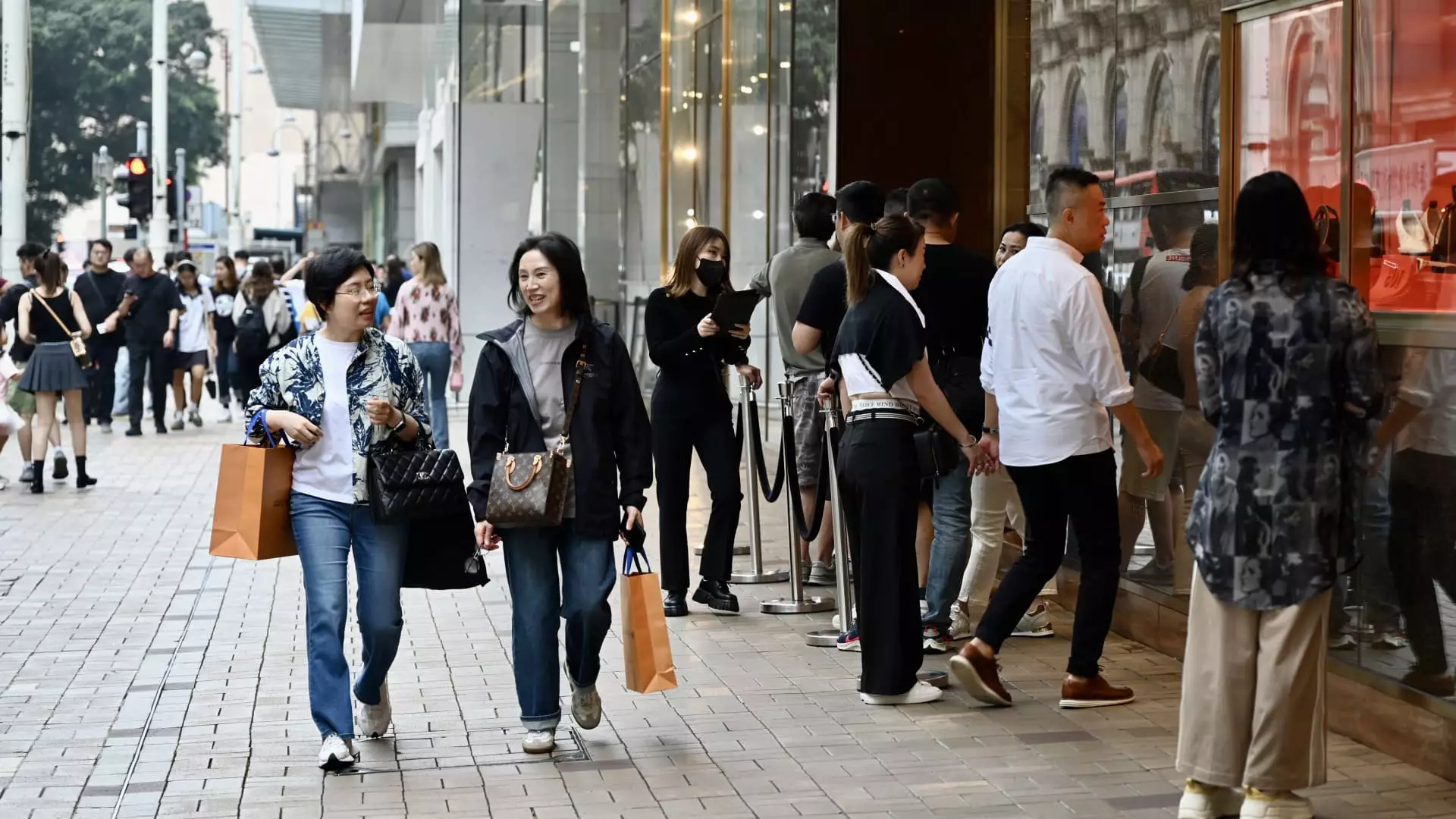Hong Kong’s retail landscape has been deeply affected by the pandemic’s enduring impacts, with indicators suggesting a long road to recovery. Retail sales figures reveal a 7.3% drop in the first seven months of 2023 compared to previous data. This decline emerges despite a remarkable 52.2% rise in visitor numbers, indicating that the revival of tourism alone is insufficient to revive consumer spending. Hong Kong, once celebrated as a haven for shoppers, particularly mainland Chinese tourists, is grappling with a drastic shift in spending habits and economic circumstances.
Amid the backdrop of bustling shopping avenues, mainland Chinese tourists were once a dominant force, often departing shops with luxury goods piled high. However, this vibrancy now seems like a bygone era. The latest statistics illustrate a stark contrast: mainland visitors represented a staggering 90% of the 22.16 billion Hong Kong dollars ($2.84 billion) expended by same-day visitors, and 67% of the HK$119.1 billion spent by overnight visitors in 2023. Nevertheless, analysts caution that the revival of this shopping paradise is far from imminent.
Experts point to a constellation of factors contributing to the dip in spending among middle-class tourists from the mainland. Christine Li, head of research for Asia-Pacific at Knight Frank, articulates that the economic slowdown—which has roots in a downturn in property prices, changes in consumer behavior, heightened emphasis on savings, and evolving travel preferences—has resulted in restricted financial outlays.
Even though per capita spending among overnight tourists has increased—to 6,495 Hong Kong dollars ($833), marking an 8.4% rise from 2019—the picture is more troubling for same-day visitors. Their expenditures plummeted by 37% to 1,383 Hong Kong dollars ($176) in 2023, indicating a conspicuous shift in priorities. Post-pandemic, many mainland Chinese shoppers are now inclined towards experiences rather than material goods, seeking to reconnect with loved ones and cherish moments over accumulating possessions. This evolving mindset has taken a toll on luxury retail sales, which have been particularly vulnerable to changes in consumer demands.
The economic pressures influencing tourists’ spending habits have fueled the popularity of “zero-dollar” tours. These travel packages, which include prepaid arrangements for transport, accommodation, and meals, attract budget-conscious travelers. Such arrangements limit additional discretionary spending, leading to less money being spent in stores and restaurants—a trend corroborated by Simon Smith from Savills, who noted that while tourists may document their experiences on social media platforms, their financial contributions to the local economy have markedly decreased.
Additionally, Hong Kong residents themselves have begun to shop across the border in Shenzhen—only a short rail ride away—where prices are significantly lower, and the shopping experience remains competitive. Amidst a shift in shopping habits, especially among younger professionals who are usually the most active consumers, the economic landscape of Hong Kong is being profoundly reshaped.
As reflected by Knight Frank’s Christine Li, the reduction in luxurious purchases among Chinese tourists has dealt a severe blow to retail in Hong Kong. The city, already grappling with a reliance on high-end sales—encompassing luxury fashion, jewelry, and timepieces—is witnessing a paradigm shift in the retail sector’s dynamics. The idyllic past is contrasted by present realities where both tourists and locals exhibit significantly altered purchasing behaviors.
Nick Bradstreet from Savills emphasizes the necessity for Hong Kong’s retail market to undergo critical adjustments, recognizing that both consumers and visitors are operating under an entirely new set of circumstances. While the immediate future appears demanding, there are glimmers of hope for recovery.
Despite concerns about prolonged recovery due to the cyclical downturn and structural issues within China, there exists optimism regarding the Hong Kong retail sector’s potential rebound. Analysts suggest a transformation in focus—from an emphasis on luxury items to the cultivation of engaging shopping experiences that tap into a wider consumer base. Christine Li asserts that such a pivot toward experiential retail could herald a feasible recovery trajectory, nurturing a new culture of consumer preferences.
Moreover, Henry Chin from CBRE suggests that while recovery might take longer than past cycles, opportunities for revitalization persist. As the retail sector begins to adapt and evolve in response to changing consumer values and economic signals, the phase of transformation could pave the way for a refreshed relationship between Hong Kong and its visitors—one that prioritizes meaningful experiences while fostering economic resilience. Through innovative strategies and an understanding of contemporary consumer trends, Hong Kong’s retail landscape may yet reclaim its erstwhile vibrancy, albeit in a redefined form.


Leave a Reply